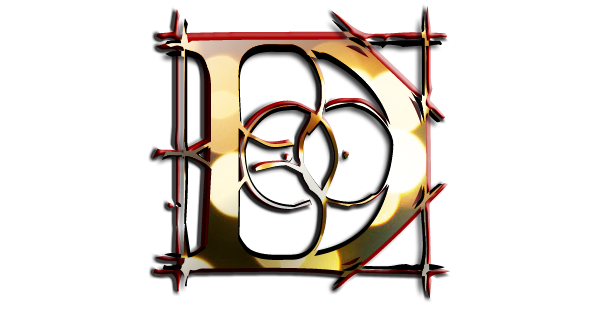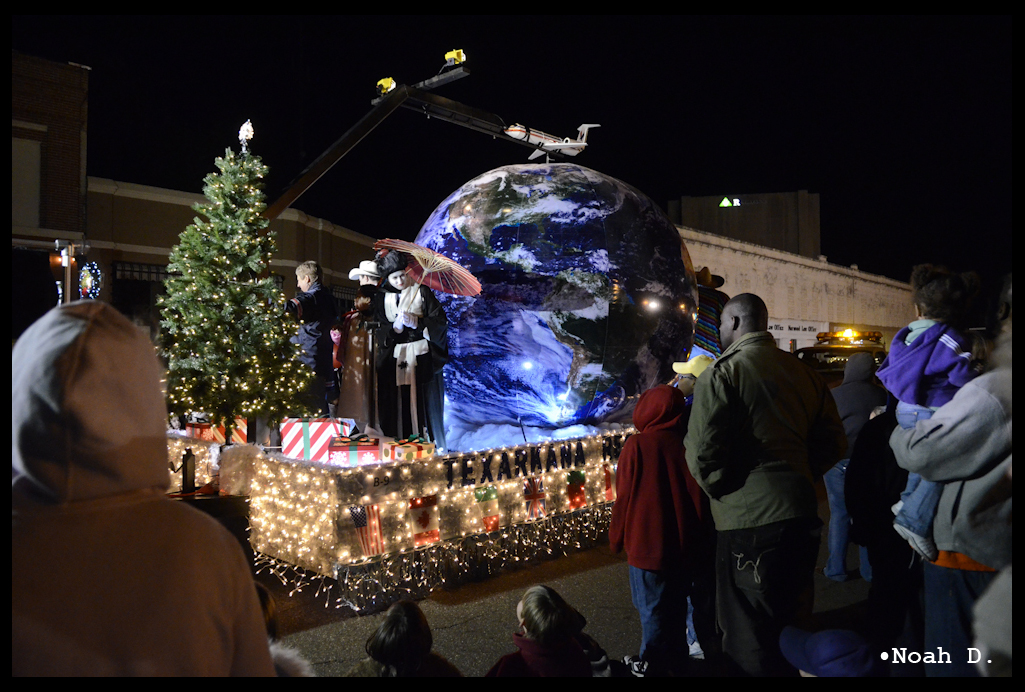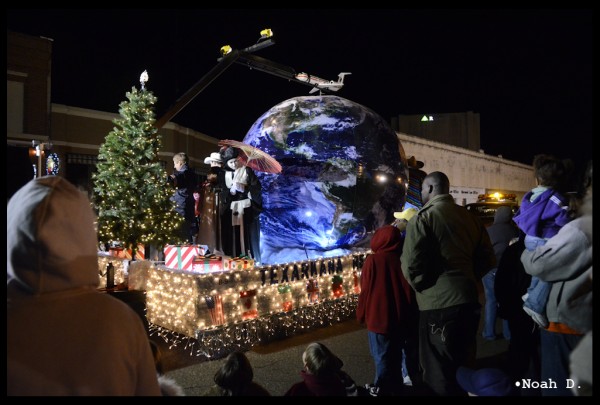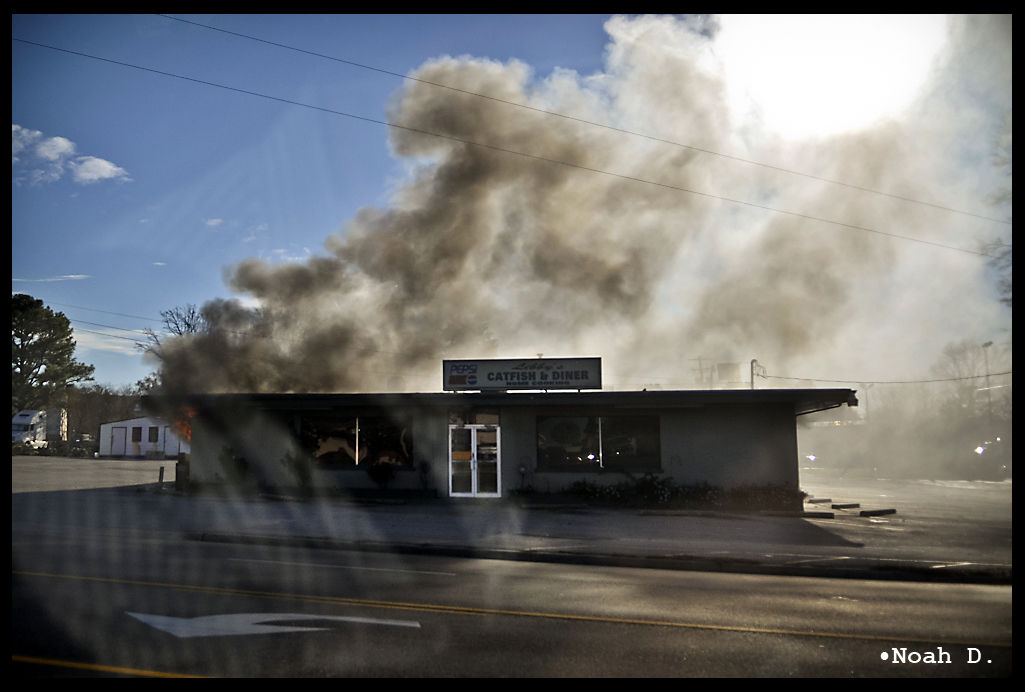…and then came the Nikon D7000.
Sometimes, the image must speak for itself. At ISO4000 – yes, you read that right. (Click a photo for the rest of the EXIF data.)
The full image:
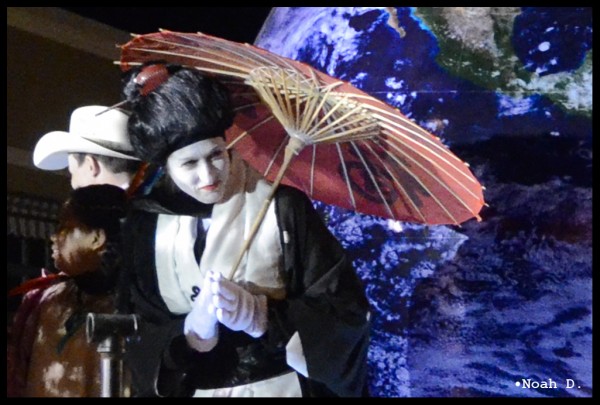 No post-process noise reduction.
No post-process noise reduction.
I’ve been using the Nikon D7000 for a few days now and genuinely am extremely impressed. I don’t know if its a game-changer, but it might be right on the cusp of one.
You can sense it all over, from the menus to the hard-button controls, Nikon is testing all sorts of technologies that will be perfected on the next round of professional cameras. It just oozes hints at “new” stuff…
One of the most practical, immediately recognizable “technologies” is the excessively good noise reduction at the high ISO’s. I’m used to shooting a D700 and D3s and, I kid you not, this gives both a run for their money. At 16megapixel, you’re pushing lots of light into those tiny little photoreceptors, yet somehow the camera smooths out the image like a champ. And, in the above image, I had not added any sort of extra in-camera sharpening or other such settings.
On the now-antiquated D200 or D2x, you would have had to shoot less than ISO800 to get something this clean. The D300 might have been able to push ISO1600 or a little more… but that might be pushing it.
There are a host of other little things that are new tricks I would have never thought would be in a $1100 camera. Its extremely customizable, all the settings remind me more of the D700 than anything else. The D7000 even possesses a few extra abilities not seen in either D700 or D3-series: Set it up on a tripod and make multiple exposures from one click of the timer mode.
Now, don’t hold me to this, but it seems there is a new shutter in there somewhere. It sounds EXTREMELY different from all other Nikons I’ve ever used. The shutter sounds very tight and concise. And VERY quiet, possibly the quietest SLR I’ve ever owned. The frame rate (5-6fps) I’m fairly positive is being held back, electronically retarded, and not mechanically limited. There is a long gap of quiet between each cycle. I would expect this technology be implemented in future professional bodies, quieter shutters and faster shutter speeds.
All of those “little” things really pale in comparison to one of its major highlights: real, bonified 1080HD @24fps behind Nikkor lenses. I’ve toyed with the “pretty good” 720 pretty-much-high-definition on the D90 and D300s… then improved on the D3-series. But then… there’s the D7000’s ability to blow it up on a 47-inch screen and see dust in streams of sunshine. (As an aside, the rolling shutter issues are extremely well controlled, whereas previous Nikon HDDSLR’s were sadly laggy.)
There just is something about it. There’s some extra “oomph” to it. Yeah, you can split hairs all day about the technical differences between 720 and 1080… but when you get right down to it, there’s just a little something extra… it “feels” different.
But ALL of that 720 vs. 1080 aside, there is absolutely no comparison when you add the D7000’s ability to control the exposure… fully manual. None of this “exposure compensation” mess like it is on the D300s/D3-series. You control the exposure: shutter, iris, ISO. Period, no contest.
Oh, and did I mention it focuses in LiveView? Yes, its kinda freaky how well it works. It still sounds like asthmatic gerbils hacking and coughing around on the video as the autofocus motors do their thing, but that would be very easily solved with an external mic. Its not good enough to follow focus smoothly, but it works shockingly well.
Another aside: the videos are recorded as .MOV files – very friendly – no longer those awkward .AVI files with weird video encoding. AND, something I never understood about the Canon’s video, there are no weird video sidecar files that seem to have no purpose. Just your one .MOV file and that’s all.
In other news, its got the usual cloud of buttons on the back. There are even buttons stacked on top of buttons. But, not always for a bad thing. Along with the self-timer multiple exposure thing falling into the category of “why didn’t they think of this before”, the focus point switch is now a button stacked on top of the AF/MF switch, making it shockingly easy to go from full 39-point 3D focus to spot metering and anything in between. The LiveView is now a lever beside a dedicated REC button and it makes a lot of sense.
On the downside, I consider DX-format a bummer. I’ve grown very accustomed to full-frame cameras recently and I feel like stepping back a little. But, as I said earlier, this camera oozes “test technology” to be implemented in the D800 or D4 or whatever that’s going to be.
Another slight downside is the plastic body. Or polycarbonate… or whatever its made out of. It feels like plastic. Not quiet as bad as the old D80, though. The camera is still (thankfully) rather heavy because of its beefy frame, but the outside is plastic, there’s no two ways about it. And… I doubt its weather sealed. My mind is not going to be quiet as at ease next time I’m in Haiti or whatever harsh environment I find myself in. The D700 handles saltwater spray like a champ.
Nikon will have these technologies polished by then, mark my words. Again, I say, this camera just oozes quality and technologies above its pay-grade. From the shutter to the extra few control options to the 1080HD, using this camera is making me excited for the upcoming new releases next year.
So, where does it sit in the lineup? Across the board, its is well above the D90 spot. I think it might have been marketed as the replacement for that, but there are significant differences. But it is NOT D300 material. The physical build quality prevents that. So its in between, in my opinion.
What does it compare to in the grand scheme? I may have people dispute this, but I place it right-smack up against the Canon 7D any day. (The Canon 60D I couldn’t tell much difference between it and the 50D.) I used the 7D overseas for months on end and this feels like an easy easy easy replacement. But now I don’t have to sacrifice lens quality and a whole new slew of lenses having two platforms in the bag.
Conclusion? Its a little brother to the D700. I would even assume the naming scheme reflects that intention. Everyone is rumoring a new bloc of cameras coming out in the Spring or Summer of 2011 – that may well be true – but the technologies of those cameras yet to even be announced are already making a good showing in the D7000.
I say, even if you have all the pro-body Nikon SLR’s, you won’t be too misguided to go ahead and get a D7000 to pass the time. I imagine the D7000 will hold water in the future much like the now-antiquated Canon 5D when it comes to venerable technology.
Stay tuned. Many a upcoming photo on this blog will be made with the D7000,
-Noah D.
